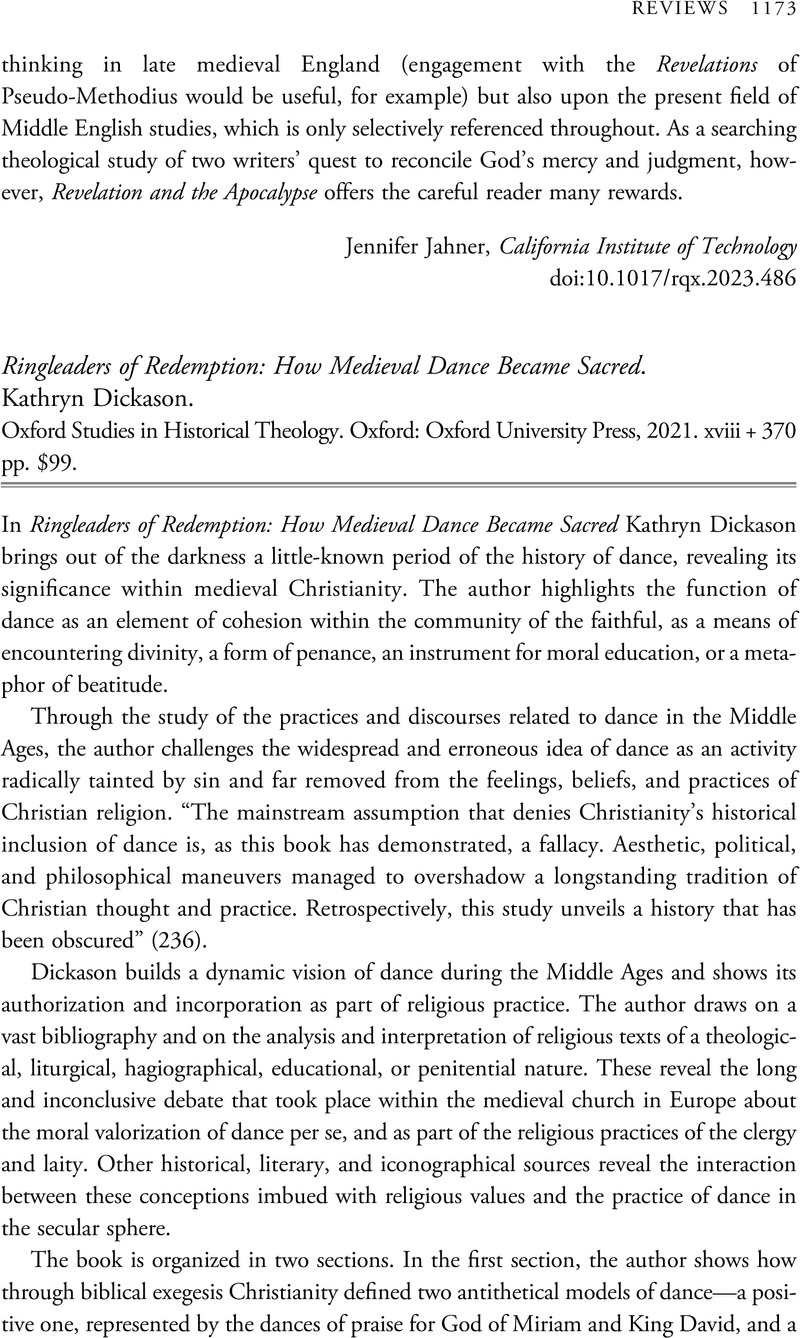No CrossRef data available.
Article contents
Ringleaders of Redemption: How Medieval Dance Became Sacred. Kathryn Dickason. Oxford Studies in Historical Theology. Oxford: Oxford University Press, 2021. xviii + 370 pp. $99.
Review products
Ringleaders of Redemption: How Medieval Dance Became Sacred. Kathryn Dickason. Oxford Studies in Historical Theology. Oxford: Oxford University Press, 2021. xviii + 370 pp. $99.
Published online by Cambridge University Press: 15 November 2023
Abstract
An abstract is not available for this content so a preview has been provided. Please use the Get access link above for information on how to access this content.

- Type
- Review
- Information
- Copyright
- Copyright © The Author(s), 2023. Published by the Renaissance Society of America



